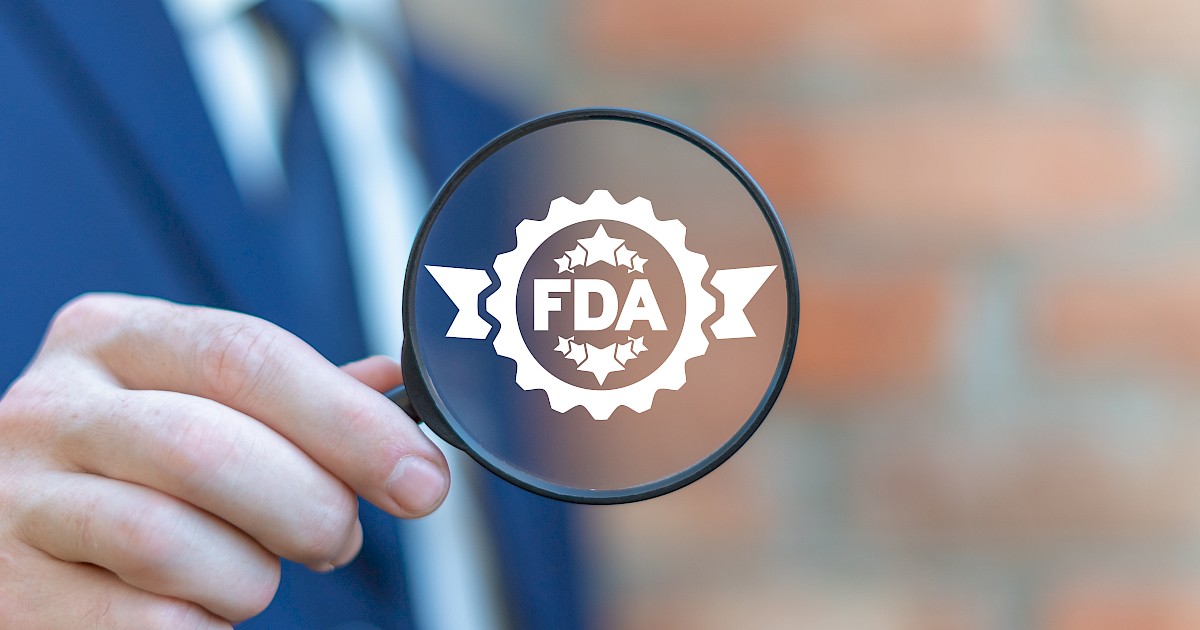Why FDA Registration Matters for 3rd-Party Medical Device Manufacturers

In the medical field, safety always comes first. Patients trust everyone involved in healthcare delivery to make an unwavering commitment to this number one priority. And every day, health systems, hospitals, and clinicians rely on biomedical devices to help them honor their commitment to safe, high-quality medical care.
Hospital asset managers and other purchasers shoulder the bulk of safety responsibility for the entire medical device fleet. Comprehensive risk-benefit analysis helps in evaluating choices regarding mission-critical biomedical equipment, but meaningful analysis becomes slippery when risk factors boil down to unanswerable product questions. This creates a big headache because managers can’t reasonably assess equipment quality and the chance that production anomalies could lead to device failure.
Fortunately, asset managers can trust the high safety threshold established by the FDA's rigorous medical device manufacturing standards. These guidelines, defined in the U.S. Code of Federal Regulations (CFR) Title 21 part 820 cover pre-market development and clinical validation required for FDA device review, as well as all subsequent market production.
Federal law requires OEMs to comply with 21 CFR 820 from pre-market development to FDA clearance or approval through ongoing production runs. For purchasing agents, FDA regulation alleviates much uncertainty when evaluating the safety of new OEM biomedical devices, freeing time and energy to address other acquisition concerns such as ROI and technology upgrades.
Third-party manufacturers and FDA regulation
Equipment repairs made with quality 3rd-party replacement components can support optimal device function, lower capital equipment costs, reduce asset downtime, and extend device lifespan. These and other benefits of 3rd-party parts directly impact hospital compliance, clinical outcomes, and patient safety.
However, third-party companies that make replacement parts for after-market OEM devices currently have no legal obligation to comply with 21 CFR 820 regulations. This surprising gap in federal law means that purchasing agents can't assume that all potential 3rd-party parts have the same quality baseline as OEM equipment.
In recent years, the FDA has probed concerns regarding 3rd-party medical device manufacturing. Those investigations contributed to the FDA’s 2021 draft guidance that establishes preliminary 3rd-party definitions. Following the draft’s publication, some advocacy groups publicly called for full regulation of 3rd-party repair and manufacturing businesses. Until regulation becomes a reality, however, 3rd-party businesses can legally choose profit over safety in virtually any stage of the manufacturing process. Such choices can compromise the reliability of biomedical equipment replacement parts, particularly those manufactured overseas.
Third-party companies can also take the opposite approach, independently choosing to maintain 21 CFR 820 manufacturing standards through voluntary FDA facility registration. Understanding what’s involved in FDA registration helps asset purchasers evaluate product quality and identify whether a potential 3rd-party partner prioritizes profit-driven or values-driven business decisions.
What is FDA establishment registration?
When a 3rd-party company registers their manufacturing facility, this alerts the FDA that biomedical equipment is manufactured at the establishment, provides contact information, and enables the agency to conduct inspections.
Facility inspections verify that registered medical device manufacturers maintain compliance with the FDA’s current good manufacturing practices (cGMP) during all phases of design and production.
What are the current good manufacturing practices for medical devices?
The most current version of FDA manufacturing guidelines outlined in 21 CFR part 820 are referred to as cGMPs. Although they overlap with many guidelines for ISO 13485 certification, another voluntary option for 3rd-party manufacturers, cGMPs and ISO 13485 are separate sets of standards.
What do cGMP guidelines include?
cGMPs address the complex and nuanced aspects of biomedical device manufacturing. Each section of the cGMPs is vital to maintaining product quality and safety.
The following selection of examples illustrate four essential topics covered under cGMPs:
Quality Management
Quality planning
A plan identifying the practices, resources, and activities involved in device design and production. The plan must establish protocols that ensure all processes meet quality requirements.
Quality System
Also called a quality management system, or QMS, this requires manufacturers to create a system to verify quality at every stage of development and production.
Product Inspection and Quality Audits
Requirements for product inspection criteria audits of the QMS itself to identify process failures. They must also define corrective and preventive actions (CAPA) that rectify the issue and prevent a recurrence.
Design
Design and development planning
A pre-project plan requiring specifications for design and development methods that facilitate product quality goals.
Design review
Companies must appoint a review team, including at least one person not involved with the current project, to conduct a formal review at each design and development stage.
Design validation
Procedures specifying procedures for prototype testing, production equipment testing, risk analysis, and other methods for design validation.
Production and Process Controls
Manufacturers must develop control and monitoring procedures for the entire production facility, including:
- Environmental conditions
- Sterilization and contamination control
- Production equipment
- Building requirements
Procedures for employee behaviors that affect production, like health, clothing, or personal hygiene, also fall under this section.
Documentation
21 CFR 820 specifies numerous documentation requirements, such as:
- Device specifications
- Production process specifications
- Quality assurance procedures
- Packaging and labeling requirements
- QMS record
- Device history file
- Complaint files
Documentation records must remain at the manufacturing facility so FDA officials can readily access them during establishment inspection.
FDA Facility Inspections
Routine inspections involve an onsite review of the QMS, design, and production procedures and documentation, facility conditions, and manufacturing equipment. Penalties apply for non-compliance. The FDA may conduct additional inspections following a product failure.
Key takeaways for decision makers
When health systems partner with an FDA-registered, 3rd-party manufacturer, they can count on replacement parts that consistently match OEM quality.
Furthermore, FDA registration demonstrates that a values-based 3rd-party manufacturer shares the health system’s overarching goal: delivering safe, patient-centered care that positively impacts health and wellbeing.
Elite Biomedical Solutions is FDA-registered, ISO 13485 -certified, and proudly manufactures OEM+ quality products in the USA. To learn more about how those products help minimize risk, boost device ROI, and support exceptional ICU and cardiac care, contact us today.

